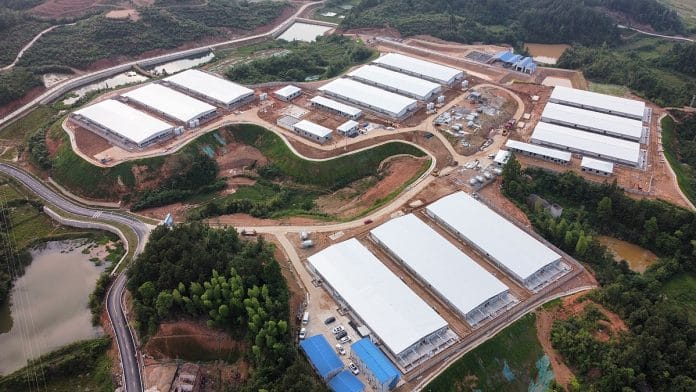New Delhi: China’s love affair with pigs has moved from the household backyard to gigantic high-rises which have sprung up across the country, as its government forcefully moves towards industrializing hog farming.
One such is a 26-floor mammoth building on the outskirts of Ezhou, a city on the southern banks of the Yangtze River. It is hailed as the world’s biggest free-standing pig farm, the New York Times said in a report, adding that a second “hog high-rise” was opening soon. “Once both buildings reach full capacity this year, it is expected to raise 1.2 million pigs annually,” the report said.
In China, pigs have long been considered a valuable livestock and the source of meat and manure. “Pigs also hold cultural significance as a symbol of prosperity because, historically, pork was served only on special occasions,” the report says.
While China consumes half of the world’s pork and has a strategic meat reserve, the country has lagged behind in the industrialisation of pig farming, the report adds. To make up, China has erected dozens of mammoth buildings across the country to produce the animal.
With agricultural land scarce and food production lagging, these towering high-rises more than serve the purpose. “The pigs are monitored on high-definition cameras by uniformed technicians in a NASA-like command center. Each floor operates like a self-contained farm for the different stages of a young pig’s life: an area for pregnant pigs, a room for farrowing piglets, spots for nursing and space for fattening the hogs,” the report says of the Ezhou tower.
The feed is carried on a conveyor belt to the top floor, where it’s “collected in giant tanks that deliver more than one million pounds of food a day to the floors below through high-tech feeding troughs that automatically dispense the meal to the hogs based on their stage of life, weight and health”.
“China’s current pig breeding is still decades behind the most advanced nations,” the report quotes Zhuge Wenda, the president of Hubei Zhongxin Kaiwei Modern Animal Husbandry, which has built the Ezhou tower.
“This provides us with room for improvement to catch up,” he said.
Incidentally, China issued a decree in 2019 asking all government departments to support the pork industry, and resolved to adopt vertical, multi-storey pig farming.
This also came a year after the African swine fever ravaged China’s pork industry and wiped out 40% of its pigs.
The New York Times report points out that China still trails most of the developed world when it comes to efficient food production — six decades after a famine killed tens of millions of its people.
The report also flags China’s shortcomings – “it has about 10 percent of the planet’s arable land for around 20 percent of the global population. Its crops cost more to produce, and its farmlands yield less corn, wheat and soybean per acre than other major economies”.
These were further aggravated by “trade disputes with the US, pandemic-related supply disruptions and the war in Ukraine”.
While the Chinese cheer that “multistory farms will have an impact on the world”, there are voices cautioning about disease that may plague such space-crunched pig farming. The report quotes Brett Stuart, founder of market research firm Global AgriTrends, who says raising so many pigs together in a single facility makes it harder to prevent contamination.
“U.S. hog farmers look at the pictures of those farms in China, and they just scratch their heads and say, ‘We would never dare do that,’” Stuart told New York Times. “It’s just too risky.”
However, since pork prices tripled in a year, Beijing’s rewards far outweighed the risks.
In a country where pork prices are closely watched as a measure of inflation, the government hopes that production consolidation will make prices less volatile over time, the report says.
Also read: Rising wheat & milk prices, high core inflation: Why RBI’s rate hike cycle is unlikely to pause






